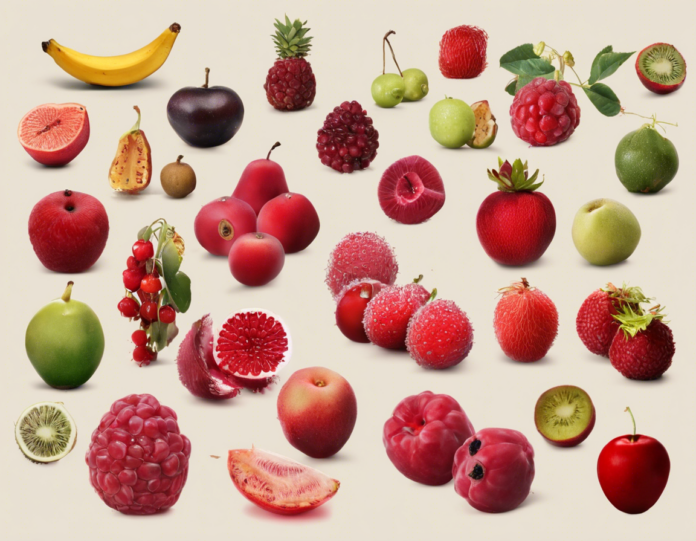Introduction
The tomato is a versatile, nutrient-rich fruit that is a staple in many cuisines around the world. Belonging to the nightshade family, tomatoes come in a variety of colors, shapes, and sizes, with different flavors and culinary uses. In this comprehensive guide, we will explore the fascinating world of tomatoes, including their history, health benefits, culinary uses, and tips for growing your own. So, let's dive in and discover the juicy world of tomatoes!
History and Origins
Tomatoes are believed to have originated in the Andes region of South America, with the earliest evidence of their cultivation dating back to around 500 BC. The Aztecs and Incas were among the first civilizations to cultivate and consume tomatoes. When the Spanish conquistadors arrived in the Americas in the 16th century, they brought tomatoes back to Europe, where they quickly spread in popularity.
Initially, tomatoes were met with skepticism and even fear in Europe, as they were mistakenly thought to be poisonous due to their resemblance to other toxic plants in the nightshade family. However, by the 18th century, tomatoes had become a staple in Mediterranean cuisine, and their popularity continued to spread globally.
Varieties of Tomatoes
There are thousands of tomato varieties cultivated worldwide, each with its own unique characteristics in terms of size, shape, color, flavor, and texture. Some popular tomato varieties include:
-
Beefsteak Tomatoes: Known for their large size and meaty texture, beefsteak tomatoes are often used for slicing and making sandwiches.
-
Cherry Tomatoes: Small and round, cherry tomatoes are sweet and flavorful, making them perfect for salads and snacking.
-
Roma Tomatoes: Also known as plum tomatoes, Romas are oblong in shape and have a dense, meaty texture, making them ideal for sauces and canning.
-
Heirloom Tomatoes: Heirloom tomatoes come in a wide range of colors and shapes and are prized for their unique flavors and textures.
-
Grape Tomatoes: Similar to cherry tomatoes but slightly oblong in shape, grape tomatoes are sweet and juicy, great for snacking and salads.
Health Benefits of Tomatoes
Tomatoes are not only delicious but also packed with nutrients and health benefits. Some of the key benefits of including tomatoes in your diet include:
-
Rich in Antioxidants: Tomatoes are a great source of lycopene, an antioxidant that has been linked to a reduced risk of certain types of cancer, heart disease, and other chronic conditions.
-
Vitamins and Minerals: Tomatoes are rich in vitamins A, C, and K, as well as potassium and folate, all of which are essential for overall health and well-being.
-
Heart Health: The potassium and antioxidants in tomatoes have been shown to support heart health by reducing blood pressure, cholesterol levels, and inflammation.
-
Weight Loss: Tomatoes are low in calories and high in fiber, making them a great choice for those looking to lose weight or maintain a healthy weight.
-
Skin Health: The vitamins A and C in tomatoes are beneficial for skin health, helping to promote collagen production and protect against sun damage.
Culinary Uses
Tomatoes are an incredibly versatile ingredient that can be used in a wide variety of culinary applications. Some popular ways to use tomatoes in cooking include:
-
Sauces: Tomatoes are the base for many classic sauces, such as marinara, pomodoro, and salsa.
-
Salads: Fresh tomatoes are a staple in salads, adding color, flavor, and juiciness to the dish.
-
Soups: Tomato soup is a comforting and nutritious dish that is enjoyed around the world.
-
Roasted: Roasting tomatoes intensifies their flavor and sweetness, making them a delicious addition to many dishes.
-
Preserves: Tomatoes can be canned or made into jams and chutneys to enjoy their flavor year-round.
Growing Tomatoes
If you're interested in growing your own tomatoes, here are some tips to help you get started:
-
Choose the Right Variety: Consider factors such as size, flavor, and climate when selecting tomato seeds or seedlings.
-
Provide Adequate Sunlight: Tomatoes thrive in full sun, so make sure to plant them in a sunny spot in your garden.
-
Water Regularly: Keep the soil consistently moist but not waterlogged to prevent issues such as blossom end rot.
-
Support the Plants: Many tomato varieties require support to help keep the plants upright as they grow and produce fruit.
-
Prune as Needed: Remove suckers and lower leaves to improve air circulation and promote fruit production.
Frequently Asked Questions (FAQs)
1. Are tomatoes a fruit or a vegetable?
Despite being botanically classified as a fruit, tomatoes are often considered vegetables in culinary terms due to their savory flavor.
2. Can you eat tomato leaves?
Tomato leaves are not meant for consumption, as they contain toxic compounds that can be harmful if ingested in large quantities.
3. How should tomatoes be stored for optimal freshness?
Tomatoes should be stored at room temperature, away from direct sunlight, and used within a few days for the best flavor and texture.
4. How can I ripen tomatoes at home?
Place unripe tomatoes in a paper bag with a ripe banana or apple to speed up the ripening process due to the ethylene gas they produce.
5. Can you freeze tomatoes?
Tomatoes can be frozen whole or in puree form for later use in sauces, soups, and stews. However, the texture may change slightly once thawed.
In conclusion, tomatoes are a delicious and nutritious fruit that can be enjoyed in a myriad of ways. Whether you grow your own or purchase them at the store, incorporating tomatoes into your diet can provide a range of health benefits and culinary delights. So, next time you're looking for a versatile and flavorful ingredient to elevate your dishes, look no further than the humble, yet mighty tomato.

